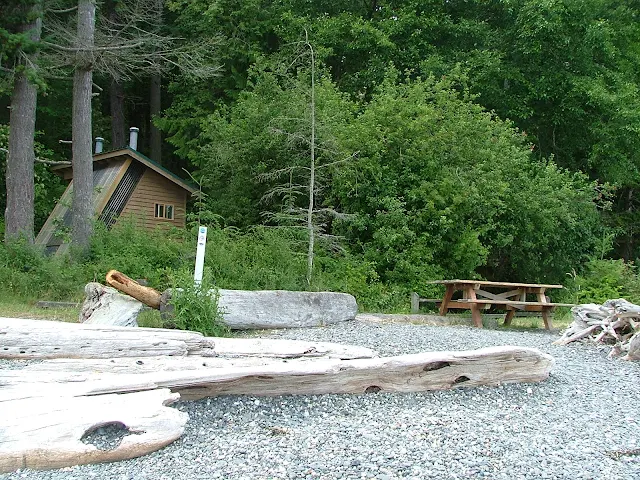 |
| At Friday Harbor with three bicycles, and yes the jib sheets caught on the handlebars on every tack. |
Last January I posted a short blog laying out a possible bike/hike/cruise scenario/itinerary that you could use as a planning building block for your own cruise. Bikes in the San Juans Below is a quick summation of what we actually ended up doing.
Our San Juan Island trip started at Shelter Bay LaConner on the Swinomish Channel. We had just returned from a week long cruise into Hood Canal and after one night in our slip we cast off again at 5:30 am trying to beat the falling tide which would leave us trapped at the dock. With just inches or less to spare we sneaked across our shallow entrance shoal and slid into Swinomish Channel, and rode the remaining outgoing current all the way into Padilla Bay. After a day of on and off winds and then really great afternoon sailing winds we arrived at 5pm and hailed the Friday Harbor Harbor Master staking claim to a slip for the next two nights. A casual stroll around town, and live local music drifting down from the city's seawall gathering esplanade contributed to a very relaxing evening on board. Not having tides or currents dictating our bicycling schedule allowed us to sleep in the next morning. Finally with hot coffee in hand, (okay, in the cup) I wandered up to Kings Market and purchased hash browns, eggs and some yummy impulse items to bring back to the boat for a late breakfast.
Definitely before noon, (but not much) we walked our bikes off the floats and headed uphill, of course it's always going to be uphill when you start at sea level. We used a folded and wadded up, photocopied not to scale scrap of map for guidance and headed for Cattle Point. The roads were without bike lanes, but drivers were respectful and we had an easy ride to American Camp and then on to Cattle Point Lighthouse. Fortunately the weather was clear and with no fog we had views all the way to Vancouver Island and across the strait of Juan De Fuca. The Olympic mountains hung in the distance completing our postcard views. Viewing Cattle Pass from up high was a thrill and brought into perspective what was previously a cockpit level chart image. It was easy to see why the Americans chose this location to set up their cannons. From our vantage point we could scan the water route all the way back to Turn Island where our boat lay just around the corner.
We brought cookies and water for lunch, and learned next time to bring lots more water and less cookies.
There is no road right along the coast so we rode part way back to Friday Harbor before turning towards Lime Kiln Park. We encountered a few long steep grades which required walking for some of us. The cliff side views are stunning and it is somewhat difficult to ride safely while scanning the waters for Killer Whales. I learned right away to stop if I wanted to really take in the sights. We followed a circle route taking us by the Lavender Gardens and back to town on a different road.
I forgot and left my camera on the boat so no pictures, sorry. The next day we were fortunate to not have any soreness brought on by being out of shape and suddenly biking like we were still children. On the way back to La Conner we stopped by Spencer Spit for an afternoon hike, and then anchored at James Island. We hung around in the morning waiting for the rising tide which we rode almost all the way to Shelter Bay.
This cruise, in spite of motor problems (our diesel quit and forced us to use our 7.5 kicker for the entire trip) turned out to be one of our best, longest and most enjoyable. I highly recommend planning a bicycle/cruise to any of the San Juan Islands.
John












































